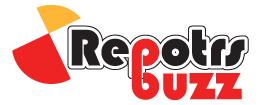Global Food Intolerance Products Market Outlook 2018-2023 : Analysis, Opportunities, Segmentation and Forecast
 Reportsbuzz has come up with a fresh detailed market study that aims on Global Food Intolerance Products Market 2017 Survival Strategies explore Economic Impact in Global Industries Manufactures, Growth, Size, Share, Trends, Development Challenges and Opportunities till 2022. The Report dubbed as Global Food Intolerance Products Market gives important identifications into global Food Intolerance Products market in addition to niche market on-going trends, dominating market players in Food Intolerance Products, and so on. The report highlights eminent patterns of the industry that will guide the customers to aim Food Intolerance Products market. In addition, the report will aid our users to boost the long run productivity and ad revenue for the global market.
Reportsbuzz has come up with a fresh detailed market study that aims on Global Food Intolerance Products Market 2017 Survival Strategies explore Economic Impact in Global Industries Manufactures, Growth, Size, Share, Trends, Development Challenges and Opportunities till 2022. The Report dubbed as Global Food Intolerance Products Market gives important identifications into global Food Intolerance Products market in addition to niche market on-going trends, dominating market players in Food Intolerance Products, and so on. The report highlights eminent patterns of the industry that will guide the customers to aim Food Intolerance Products market. In addition, the report will aid our users to boost the long run productivity and ad revenue for the global market.
In this report, the global Food Intolerance Products market is valued at USD XX million in 2017 and is expected to reach USD XX million by the end of 2025, growing at a CAGR of XX% between 2017 and 2025.
Geographically, this report is segmented into several key Regions, with production, consumption, revenue (million USD), market share and growth rate of Food Intolerance Products in these regions, from 2013 to 2025 (forecast), covering
North America
Europe
China
Japan
Southeast Asia
India
Global Food Intolerance Products market competition by top manufacturers, with production, price, revenue (value) and market share for each manufacturer; the top players including
The Kraft Heinz (US)
Nestle (Switzerland)
Danone (France)
Kellogg (US)
General Mills (US)
The Hain Celestial Group (US)
Doves Farm Foods (UK)
Dr Schar UK (UK)
Amy’s Kitchen (US)
Pamela’s Products (US)
Roma Food Products (US)
Gluten Free Foods (UK)
Glutino Food Group (Canada)
Green Valley Organics (US)
Nature’s Path Foods (US)
Galaxy Nutritional Foods (US)
Alpro UK (UK)
Barry Callebaut (Switzerland)
Daiya Foods (Canada)
Sweet William (Australia)
On the basis of product, this report displays the production, revenue, price, market share and growth rate of each type, primarily split into
Diabetic Food
Gluten-Free Food
Lactose-Free Food
Other
On the basis of the end users/applications, this report focuses on the status and outlook for major applications/end users, consumption (sales), market share and growth rate for each application, including
Supermarkets and Hypermarkets
Convenience Stores
Specialist Retailers
Online Stores
Other
If you have any special requirements, please let us know and we will offer you the report as you want.
Table of Contents
Global Food Intolerance Products Market Research Report 2018
1 Food Intolerance Products Market Overview
1.1 Product Overview and Scope of Food Intolerance Products
1.2 Food Intolerance Products Segment by Type (Product Category)
1.2.1 Global Food Intolerance Products Production and CAGR (%) Comparison by Type (Product Category)(2013-2025)
1.2.2 Global Food Intolerance Products Production Market Share by Type (Product Category) in 2017
1.2.3 Diabetic Food
1.2.4 Gluten-Free Food
1.2.5 Lactose-Free Food
1.2.6 Other
1.3 Global Food Intolerance Products Segment by Application
1.3.1 Food Intolerance Products Consumption (Sales) Comparison by Application (2013-2025)
1.3.2 Supermarkets and Hypermarkets
1.3.3 Convenience Stores
1.3.4 Specialist Retailers
1.3.5 Online Stores
1.3.6 Other
1.4 Global Food Intolerance Products Market by Region (2013-2025)
1.4.1 Global Food Intolerance Products Market Size (Value) and CAGR (%) Comparison by Region (2013-2025)
1.4.2 North America Status and Prospect (2013-2025)
1.4.3 Europe Status and Prospect (2013-2025)
1.4.4 China Status and Prospect (2013-2025)
1.4.5 Japan Status and Prospect (2013-2025)
1.4.6 Southeast Asia Status and Prospect (2013-2025)
1.4.7 India Status and Prospect (2013-2025)
1.5 Global Market Size (Value) of Food Intolerance Products (2013-2025)
1.5.1 Global Food Intolerance Products Revenue Status and Outlook (2013-2025)
1.5.2 Global Food Intolerance Products Capacity, Production Status and Outlook (2013-2025)
2 Global Food Intolerance Products Market Competition by Manufacturers
2.1 Global Food Intolerance Products Capacity, Production and Share by Manufacturers (2013-2018)
2.1.1 Global Food Intolerance Products Capacity and Share by Manufacturers (2013-2018)
2.1.2 Global Food Intolerance Products Production and Share by Manufacturers (2013-2018)
2.2 Global Food Intolerance Products Revenue and Share by Manufacturers (2013-2018)
2.3 Global Food Intolerance Products Average Price by Manufacturers (2013-2018)
2.4 Manufacturers Food Intolerance Products Manufacturing Base Distribution, Sales Area and Product Type
2.5 Food Intolerance Products Market Competitive Situation and Trends
2.5.1 Food Intolerance Products Market Concentration Rate
2.5.2 Food Intolerance Products Market Share of Top 3 and Top 5 Manufacturers
2.5.3 Mergers & Acquisitions, Expansion
3 Global Food Intolerance Products Capacity, Production, Revenue (Value) by Region (2013-2018)
3.1 Global Food Intolerance Products Capacity and Market Share by Region (2013-2018)
3.2 Global Food Intolerance Products Production and Market Share by Region (2013-2018)
3.3 Global Food Intolerance Products Revenue (Value) and Market Share by Region (2013-2018)
3.4 Global Food Intolerance Products Capacity, Production, Revenue, Price and Gross Margin (2013-2018)
3.5 North America Food Intolerance Products Capacity, Production, Revenue, Price and Gross Margin (2013-2018)
3.6 Europe Food Intolerance Products Capacity, Production, Revenue, Price and Gross Margin (2013-2018)
3.7 China Food Intolerance Products Capacity, Production, Revenue, Price and Gross Margin (2013-2018)
3.8 Japan Food Intolerance Products Capacity, Production, Revenue, Price and Gross Margin (2013-2018)
3.9 Southeast Asia Food Intolerance Products Capacity, Production, Revenue, Price and Gross Margin (2013-2018)
3.10 India Food Intolerance Products Capacity, Production, Revenue, Price and Gross Margin (2013-2018)
4 Global Food Intolerance Products Supply (Production), Consumption, Export, Import by Region (2013-2018)
4.1 Global Food Intolerance Products Consumption by Region (2013-2018)
4.2 North America Food Intolerance Products Production, Consumption, Export, Import (2013-2018)
4.3 Europe Food Intolerance Products Production, Consumption, Export, Import (2013-2018)
4.4 China Food Intolerance Products Production, Consumption, Export, Import (2013-2018)
4.5 Japan Food Intolerance Products Production, Consumption, Export, Import (2013-2018)
4.6 Southeast Asia Food Intolerance Products Production, Consumption, Export, Import (2013-2018)
4.7 India Food Intolerance Products Production, Consumption, Export, Import (2013-2018)
5 Global Food Intolerance Products Production, Revenue (Value), Price Trend by Type
5.1 Global Food Intolerance Products Production and Market Share by Type (2013-2018)
5.2 Global Food Intolerance Products Revenue and Market Share by Type (2013-2018)
5.3 Global Food Intolerance Products Price by Type (2013-2018)
5.4 Global Food Intolerance Products Production Growth by Type (2013-2018)
6 Global Food Intolerance Products Market Analysis by Application
6.1 Global Food Intolerance Products Consumption and Market Share by Application (2013-2018)
6.2 Global Food Intolerance Products Consumption Growth Rate by Application (2013-2018)
6.3 Market Drivers and Opportunities
6.3.1 Potential Applications
6.3.2 Emerging Markets/Countries
7 Global Food Intolerance Products Manufacturers Profiles/Analysis
7.1 The Kraft Heinz (US)
7.1.1 Company Basic Information, Manufacturing Base, Sales Area and Its Competitors
7.1.2 Food Intolerance Products Product Category, Application and Specification
7.1.2.1 Product A
7.1.2.2 Product B
7.1.3 The Kraft Heinz (US) Food Intolerance Products Capacity, Production, Revenue, Price and Gross Margin (2013-2018)
7.1.4 Main Business/Business Overview
7.2 Nestle (Switzerland)
7.2.1 Company Basic Information, Manufacturing Base, Sales Area and Its Competitors
7.2.2 Food Intolerance Products Product Category, Application and Specification
7.2.2.1 Product A
7.2.2.2 Product B
7.2.3 Nestle (Switzerland) Food Intolerance Products Capacity, Production, Revenue, Price and Gross Margin (2013-2018)
7.2.4 Main Business/Business Overview
7.3 Danone (France)
7.3.1 Company Basic Information, Manufacturing Base, Sales Area and Its Competitors
7.3.2 Food Intolerance Products Product Category, Application and Specification
7.3.2.1 Product A
7.3.2.2 Product B
7.3.3 Danone (France) Food Intolerance Products Capacity, Production, Revenue, Price and Gross Margin (2013-2018)
7.3.4 Main Business/Business Overview
7.4 Kellogg (US)
7.4.1 Company Basic Information, Manufacturing Base, Sales Area and Its Competitors
7.4.2 Food Intolerance Products Product Category, Application and Specification
7.4.2.1 Product A
7.4.2.2 Product B
7.4.3 Kellogg (US) Food Intolerance Products Capacity, Production, Revenue, Price and Gross Margin (2013-2018)
7.4.4 Main Business/Business Overview
7.5 General Mills (US)
7.5.1 Company Basic Information, Manufacturing Base, Sales Area and Its Competitors
7.5.2 Food Intolerance Products Product Category, Application and Specification
7.5.2.1 Product A
7.5.2.2 Product B
7.5.3 General Mills (US) Food Intolerance Products Capacity, Production, Revenue, Price and Gross Margin (2013-2018)
7.5.4 Main Business/Business Overview
7.6 The Hain Celestial Group (US)
7.6.1 Company Basic Information, Manufacturing Base, Sales Area and Its Competitors
7.6.2 Food Intolerance Products Product Category, Application and Specification
7.6.2.1 Product A
7.6.2.2 Product B
7.6.3 The Hain Celestial Group (US) Food Intolerance Products Capacity, Production, Revenue, Price and Gross Margin (2013-2018)
7.6.4 Main Business/Business Overview
7.7 Doves Farm Foods (UK)
7.7.1 Company Basic Information, Manufacturing Base, Sales Area and Its Competitors
7.7.2 Food Intolerance Products Product Category, Application and Specification
7.7.2.1 Product A
7.7.2.2 Product B
7.7.3 Doves Farm Foods (UK) Food Intolerance Products Capacity, Production, Revenue, Price and Gross Margin (2013-2018)
7.7.4 Main Business/Business Overview
7.8 Dr Schar UK (UK)
7.8.1 Company Basic Information, Manufacturing Base, Sales Area and Its Competitors
7.8.2 Food Intolerance Products Product Category, Application and Specification
7.8.2.1 Product A
7.8.2.2 Product B
7.8.3 Dr Schar UK (UK) Food Intolerance Products Capacity, Production, Revenue, Price and Gross Margin (2013-2018)
7.8.4 Main Business/Business Overview
7.9 Amy’s Kitchen (US)
7.9.1 Company Basic Information, Manufacturing Base, Sales Area and Its Competitors
7.9.2 Food Intolerance Products Product Category, Application and Specification
7.9.2.1 Product A
7.9.2.2 Product B
7.9.3 Amy’s Kitchen (US) Food Intolerance Products Capacity, Production, Revenue, Price and Gross Margin (2013-2018)
7.9.4 Main Business/Business Overview
7.10 Pamela’s Products (US)
7.10.1 Company Basic Information, Manufacturing Base, Sales Area and Its Competitors
7.10.2 Food Intolerance Products Product Category, Application and Specification
7.10.2.1 Product A
7.10.2.2 Product B
7.10.3 Pamela’s Products (US) Food Intolerance Products Capacity, Production, Revenue, Price and Gross Margin (2013-2018)
7.10.4 Main Business/Business Overview
7.11 Roma Food Products (US)
7.12 Gluten Free Foods (UK)
7.13 Glutino Food Group (Canada)
7.14 Green Valley Organics (US)
7.15 Nature’s Path Foods (US)
7.16 Galaxy Nutritional Foods (US)
7.17 Alpro UK (UK)
7.18 Barry Callebaut (Switzerland)
7.19 Daiya Foods (Canada)
7.20 Sweet William (Australia)
8 Food Intolerance Products Manufacturing Cost Analysis
8.1 Food Intolerance Products Key Raw Materials Analysis
8.1.1 Key Raw Materials
8.1.2 Price Trend of Key Raw Materials
8.1.3 Key Suppliers of Raw Materials
8.1.4 Market Concentration Rate of Raw Materials
8.2 Proportion of Manufacturing Cost Structure
8.2.1 Raw Materials
8.2.2 Labor Cost
8.2.3 Manufacturing Expenses
8.3 Manufacturing Process Analysis of Food Intolerance Products
9 Industrial Chain, Sourcing Strategy and Downstream Buyers
9.1 Food Intolerance Products Industrial Chain Analysis
9.2 Upstream Raw Materials Sourcing
9.3 Raw Materials Sources of Food Intolerance Products Major Manufacturers in 2017
9.4 Downstream Buyers
10 Marketing Strategy Analysis, Distributors/Traders
10.1 Marketing Channel
10.1.1 Direct Marketing
10.1.2 Indirect Marketing
10.1.3 Marketing Channel Development Trend
10.2 Market Positioning
10.2.1 Pricing Strategy
10.2.2 Brand Strategy
10.2.3 Target Client
10.3 Distributors/Traders List
11 Market Effect Factors Analysis
11.1 Technology Progress/Risk
11.1.1 Substitutes Threat
11.1.2 Technology Progress in Related Industry
11.2 Consumer Needs/Customer Preference Change
11.3 Economic/Political Environmental Change
12 Global Food Intolerance Products Market Forecast (2018-2025)
12.1 Global Food Intolerance Products Capacity, Production, Revenue Forecast (2018-2025)
12.1.1 Global Food Intolerance Products Capacity, Production and Growth Rate Forecast (2018-2025)
12.1.2 Global Food Intolerance Products Revenue and Growth Rate Forecast (2018-2025)
12.1.3 Global Food Intolerance Products Price and Trend Forecast (2018-2025)
12.2 Global Food Intolerance Products Production, Consumption , Import and Export Forecast by Region (2018-2025)
12.2.1 North America Food Intolerance Products Production, Revenue, Consumption, Export and Import Forecast (2018-2025)
12.2.2 Europe Food Intolerance Products Production, Revenue, Consumption, Export and Import Forecast (2018-2025)
12.2.3 China Food Intolerance Products Production, Revenue, Consumption, Export and Import Forecast (2018-2025)
12.2.4 Japan Food Intolerance Products Production, Revenue, Consumption, Export and Import Forecast (2018-2025)
12.2.5 Southeast Asia Food Intolerance Products Production, Revenue, Consumption, Export and Import Forecast (2018-2025)
12.2.6 India Food Intolerance Products Production, Revenue, Consumption, Export and Import Forecast (2018-2025)
12.3 Global Food Intolerance Products Production, Revenue and Price Forecast by Type (2018-2025)
12.4 Global Food Intolerance Products Consumption Forecast by Application (2018-2025)
13 Research Findings and Conclusion
14 Appendix
14.1 Methodology/Research Approach
14.1.1 Research Programs/Design
14.1.2 Market Size Estimation
14.1.3 Market Breakdown and Data Triangulation
14.2 Data Source
14.2.1 Secondary Sources
14.2.2 Primary Sources
14.3 Disclaimer



